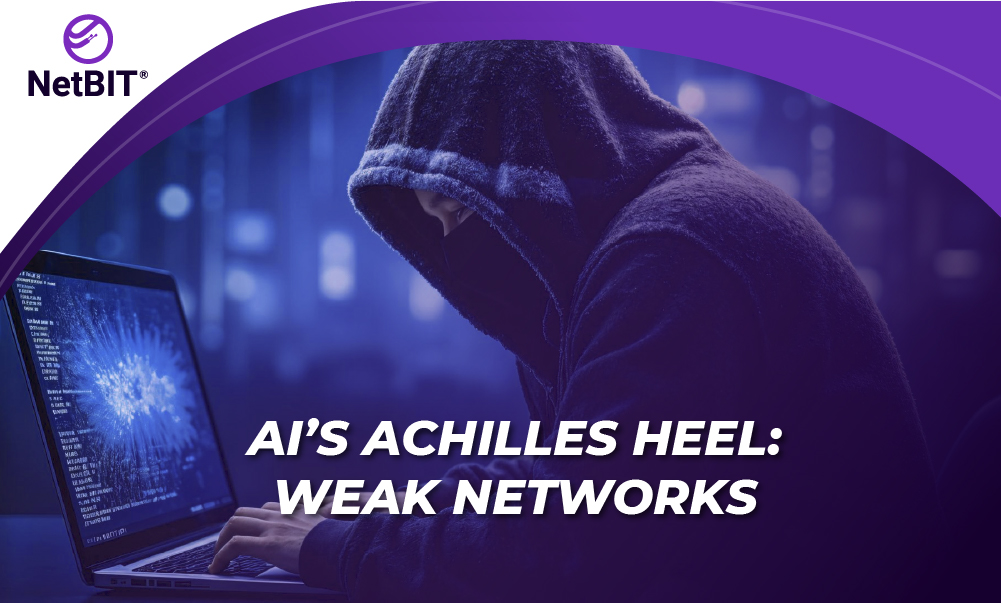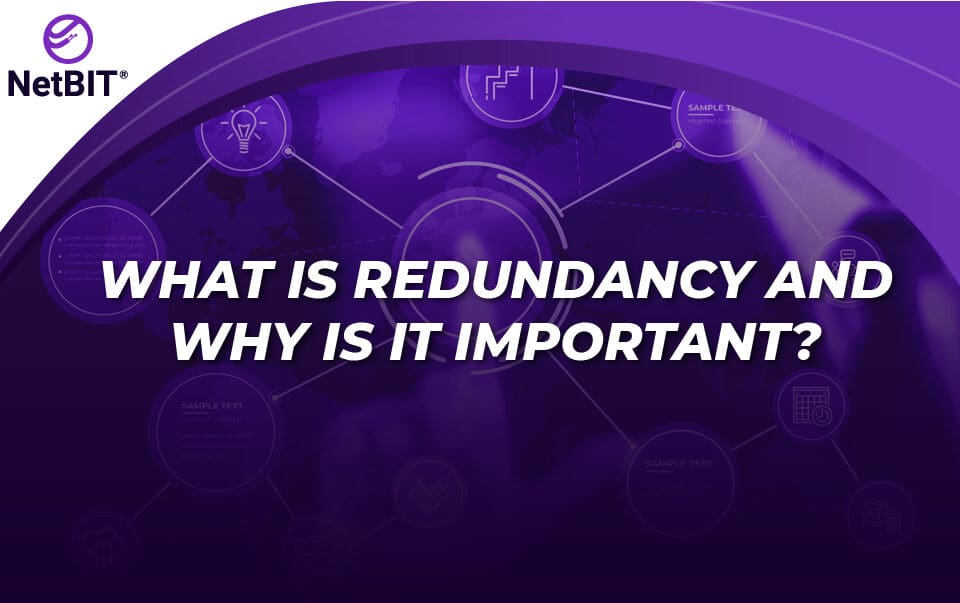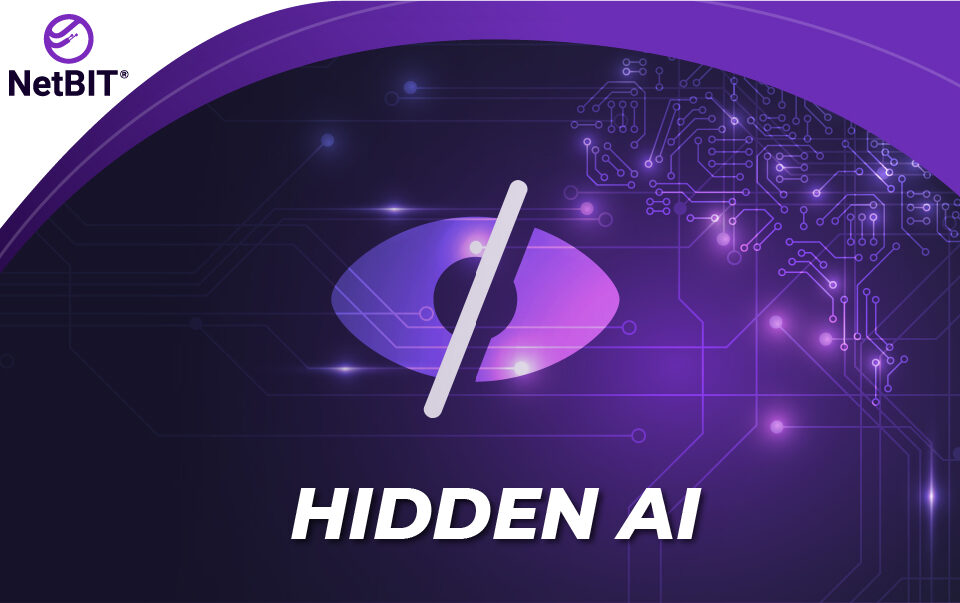The adoption of Artificial Intelligence (AI) in the business world has become a key strategic differentiator. From virtual assistants that improve customer service to algorithms capable of analyzing massive volumes of data to predict trends, AI is present in more and more sectors.
However, there is a critical factor that many organizations underestimate: the network infrastructure.
An AI system does not operate in isolation. It needs to constantly transmit, receive, and process information. When the network that supports these processes is weak —whether due to lack of capacity, low speed, insufficient security, or poor scalability— the impact can be far more serious than it appears.
In this article, we explore the main risks of implementing AI on insufficient network infrastructure and how they directly affect productivity, security, and competitiveness.
1. Loss of efficiency and productivity
The first sign of a weak network is high latency. This means that data takes longer to travel between users, the cloud, and local servers. In an AI environment, where decisions often depend on immediacy, even a few seconds of delay can be critical.
-
A chatbot that responds slowly frustrates customers.
-
A predictive analytics system that lags in processing disrupts the supply chain.
The result: lower productivity, reduced competitiveness, and frustration for both employees and customers.
2. Service interruptions
Weak networks saturate easily. When multiple users or devices simultaneously access AI systems that depend on large data flows, partial or total service outages are inevitable.
Every interruption translates into:
-
Customers losing trust.
-
Internal operations grinding to a halt.
-
Reputational damage in the market.
3. Cybersecurity risks
Security is the most vulnerable area of a weak network. Without strong protection protocols, AI becomes an easy target for cybercriminals.
Key risks include:
-
Exposure of sensitive data if the network lacks encryption or robust firewalls.
-
DDoS attacks that overwhelm the network and take AI applications offline.
-
Algorithm manipulation by tampering with training or runtime data.
In sectors such as finance, healthcare, or government, these vulnerabilities can have far-reaching legal, financial, and social consequences.
PONENTES
NetBIT Secure
Symmetric / Dedicated Internet Service with Logical Security, composed of high quality and high end equipment.
NetBIT Secure adapts to the speed of your business.
Written SLA guarantee. Installation and implementation within days. Configurable policies according to your needs.
4. Decisions based on incomplete data
The quality of AI depends on the quality of data. A weak network can cause packet loss, delays, or synchronization errors, leading to incomplete or corrupted information.
This directly impacts the accuracy of predictions and recommendations:
-
A logistics error can break the supply chain.
-
A misdiagnosis in healthcare can put lives at risk.
5. Scalability limitations
One of AI’s greatest advantages is its ability to support rapid growth. But with a weak network, the opposite happens:
-
New AI applications cannot be deployed due to lack of capacity.
-
Teams cannot collaborate in real time.
-
The company falls behind competitors with stronger, scalable networks.
A weak network becomes a direct roadblock to innovation.
6. Financial impact and hidden costs
Implementing AI on a deficient network generates unexpected costs that organizations often overlook:
-
Constant spending on IT support and maintenance.
-
Emergency investments in patches or temporary fixes.
-
Revenue losses due to downtime or dissatisfied customers.
What seemed like an initial saving by not investing in robust infrastructure becomes a higher cost in the medium term.
7. Poor customer experience
In the digital era, customers expect fast, seamless, and secure interactions. AI systems that fail because of network weaknesses affect brand perception:
-
A virtual assistant that disconnects.
-
A facial recognition app that lags.
-
A recommendation engine that never loads.
The result: frustrated customers who move to more reliable competitors.
8. Regulatory and compliance risks
Industries such as finance or healthcare are subject to strict regulations regarding data privacy and security.
A weak network can prevent AI systems from complying with these requirements, resulting in:
-
Heavy fines.
-
Loss of licenses or permits.
-
Damage to institutional credibility.
9. Loss of trust in technology
The most invisible yet most serious risk is the loss of trust in AI.
When employees, executives, or customers constantly experience failures caused by a weak network, they begin to see AI as unreliable or unhelpful. This slows down adoption and blocks innovation, leaving the company at a disadvantage compared to competitors with robust infrastructures.
Looking ahead
Artificial Intelligence offers tremendous opportunities for businesses, but its success does not rely solely on algorithms —it depends on the strength of the network that supports them.
Implementing AI on a weak infrastructure is like building a skyscraper on unstable foundations: sooner or later, the risks will materialize into financial, reputational, and strategic losses.
Investing in a robust, secure, and scalable network is not a luxury. It is a non-negotiable condition to fully unlock the potential of AI in today’s business environment.








